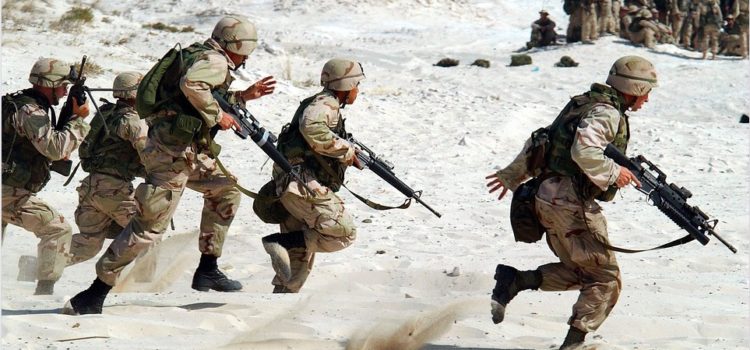

This article is an excerpt from the Shortform book guide to "A Promised Land" by Barack Obama. Shortform has the world's best summaries and analyses of books you should be reading.
Like this article? Sign up for a free trial here .
What was President Obama’s role in the Osama bin Laden capture? Why was this an important moment in American history?
The Osama bin Laden capture was a defining moment of Obama’s presidency. It meant sending a signal that America pursued justice, and would not allow terrorism.
Read more about the Osama bin Laden capture below.
Obama and the Hunt for Osama bin Laden
In previous chapters, we’ve explored Obama’s national security strategy and his desire to bring the Bush administration’s “War on Terror” more in line with America’s constitutional principles. We’ve also seen how his status as the nation’s first African-American president opened him up to racialized forms of political attack that no previous president had ever had to deal with.
In the spring of 2011, both these themes of his presidency would come to a head as he had to deal with two very different, but very important figures whom Obama considered to be dangerous threats to his vision of America.
Bringing bin Laden to Justice
Shortly after taking office, President Obama set down one of his top national security priorities: capturing or killing Osama bin Laden, the Al Qaeda leader and the man primarily responsible for the 9/11 attack that had resulted in the deaths of nearly 3,000 Americans. Obama told National Security Advisor Tom Donilon that getting bin Laden was central to his administration’s counterterrorism strategy. The president wanted regular updates on the status of the hunt to bring the terrorist leader to justice.
For Obama, capturing or killing bin Laden was not simply a matter of vengeance. It was about bringing justice to his victims and their families. It was also about restoring pride in and respect for America and sending a signal to adversaries all over the world—that no matter the cost or sacrifice, the United States would never waver in its pursuit of justice. This meant that Obama actively pursued the Osama bin Laden capture.
Redefining the “War on Terror”
It was also important to Obama’s broader goal of refocusing and redefining the nation’s counterterrorism strategy. Obama believed that Bush’s embrace of the “War on Terror” framing was counterproductive. In his view, this framing elevated Al Qaeda and validated its self-delusions that it was engaged in a titanic, cosmic struggle with the United States. This “War on Terror” mindset had justified the failed invasion and occupation of Iraq, alienated potential allies in the Muslim world, and ultimately failed to make the country safer from the threat of Islamist terrorism.
Eliminating bin Laden would be a powerful way to show the world that groups like Al Qaeda were not all-powerful conspirators capable of bringing the world to its knees—instead, they were simply deranged and deluded killers.
The Pacer
But locating bin Laden was easier said than done. U.S. forces were believed to have been very close to capturing him in December 2001. Unfortunately, he managed to slip away from his hideout in the caves of the remote Tora Bora region of Afghanistan. Since then, his trail had gone cold—though he still periodically emerged to release videos taunting the U.S. and mocking its failure to capture him.
In September 2010, after painstaking intelligence-gathering, the administration got its first crack in the case. CIA Director Leon Panetta shared with the president that he believed they had pinpointed the whereabouts of a man known as Abu Ahmed al-Kuwaiti. al-Kuwaiti was a courier for Al Qaeda and was believed to have close links to bin Laden. After surveilling al-Kuwaiti, intelligence analysts managed to trace his movements to a large compound on the suburban outskirts of the Pakistani city of Abbottabad.
Based on the size and high-security nature of the compound, as well as the frequency of al-Kuwaiti’s visits, analysts in the CIA and Pentagon believed there was a strong possibility that a high-ranking Al Qaeda leader was harbored there.
Most promisingly, aerial surveillance footage in December 2010 showed a tall, thin figure (whom analysts dubbed “the Pacer”) who routinely left the inside of the compound to wander around the adjoining courtyard. Crucially, the Pacer never appeared to leave the compound itself. The Pacer’s apparent height, weight, and age also matched bin Laden’s. Other circumstantial evidence further bolstered the case. Surveillance showed that there were a number of children living in the compound, who seemed to match the age and number of bin Laden’s known children.
Weighing the Risks
Although much of the evidence was still circumstantial, Obama was convinced enough to order plans for a raid on the compound to be put into motion. Plans for the raid needed to be highly covert, with only a handful of high-ranking figures across the government having any knowledge of it. Obama knew that if even the slightest hint got out, bin Laden could flee and the U.S. would lose its best chance of apprehending him.
Because the Abbottabad compound was in Pakistan, it was also crucial that the Pakistani government and military be kept in the dark. Although Pakistan was a putative U.S. ally, it was well-known that elements of the Pakistani military and security services routinely colluded and shared information with Taliban and Al Qaeda operatives. Moreover, an unauthorized raid on Pakistani territory carried the risk of dangerous diplomatic and political fallout. Any raiding party would need to be in and out before the Pakistani military and police could arrive on the scene.
After ruling out an airstrike on the compound, Obama decided on a ground operation to land a helicopter with a team of Navy SEALs who would overtake the facility, kill the inhabitants, and depart before the arrival of Pakistani forces. Under Obama’s order, the team was assembled and began training for its mission at Fort Bragg, North Carolina, under the direction of Admiral William McRaven.
A Momentous Decision
There was real division in the administration over the planned Abbottabad raid. Robert Gates and Joe Biden were opposed to taking action. Gates cited the tentative nature of the evidence, which suggested that there was only a 50 percent chance that the Pacer was, in fact, bin Laden. He also feared that, if something went wrong, the SEAL team could end up in a standoff with the Pakistani military on the grounds of the compound.
Biden echoed these concerns, and also reminded the president that a failed raid could be politically disastrous for the administration. The vice president cited the example of Operation Eagle Claw, President Jimmy Carter’s failed attempt to rescue American hostages being held at the U.S. embassy in Tehran in 1980. That botched mission resulted in two crashed helicopters, the deaths of eight U.S. servicemen, and the collapse of Carter’s domestic political support (he would lose to Republican Ronald Reagan in a landslide that November). Biden warned Obama that he risked a similar fate if he approved a failed raid, which might spell the end of his presidency.
While he was mindful of these concerns and aware of the risks, Obama also had to think about the risks of inaction. Doing nothing meant squandering the best lead the U.S. had had on bin Laden in a decade—and they might never get another chance. Plus, if they dithered and waited too long, the secret would get out and they would have to abort the mission anyway. If they were to act, they had to act now.
For Obama, the decision to authorize or not authorize the strike was a difficult one. But in some respects, it was not all that different from other choices he’d had to make as president. Every decision, he realized, came down to weighing the odds and calculating risks. He felt confident that he was prepared to make his decision.
Sitting in the Diplomatic Reception Room at the White House on April 29, 2011 (while Malia and Sasha played in the halls outside) President Obama officially gave the order for the raid, dubbed Operation Neptune Spear. It would take place on May 1, when a moonless night in Pakistan would give the SEALs maximum cover of darkness.

———End of Preview———
Like what you just read? Read the rest of the world's best book summary and analysis of Barack Obama's "A Promised Land" at Shortform .
Here's what you'll find in our full A Promised Land summary :
- How Barack Obama went from relative obscurity to the first Black president
- What principles guided his political leadership style
- Why Obama retained an unshakable faith in the potential and promise of America






